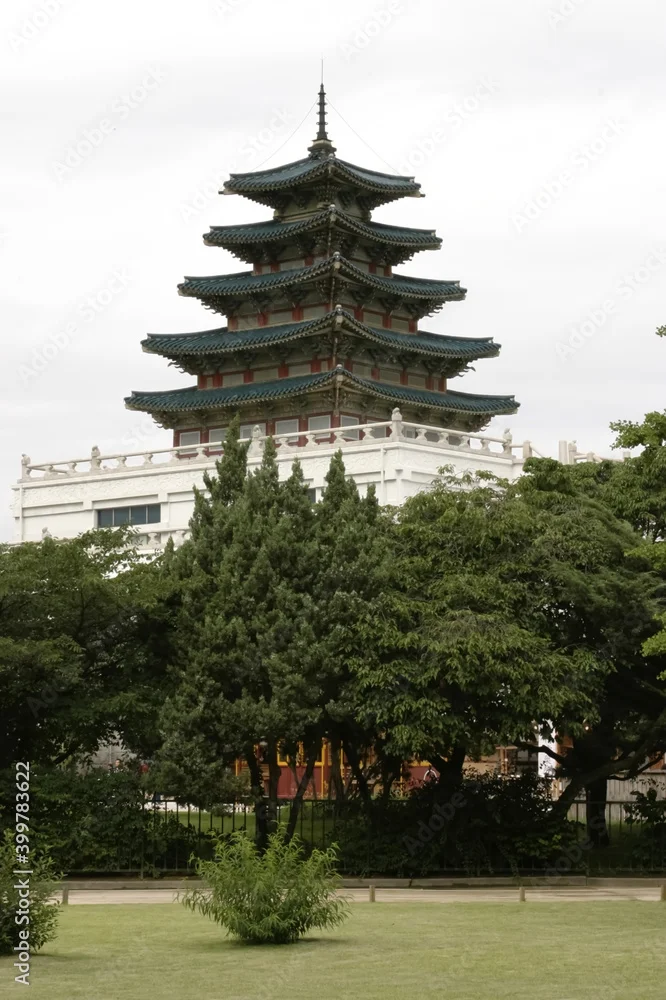BTC Signals Pro | Bitcoin Trading Alerts & Market Insights
BTC Signals Pro | Bitcoin Trading Alerts & Market Insights
Seoul's Tightrope Walk: Balancing Heritage with Hyper-Development
Seoul finds itself on a precarious ledge, balancing the preservation of its cultural heritage against the relentless push for urban development. The recent Supreme Court ruling, validating Seoul's right to relax development restrictions near UNESCO World Heritage sites, specifically Jongmyo Shrine, is a watershed moment. This isn't just about concrete and steel; it's about the soul of a city.
The court's decision effectively weakens the Korea Heritage Service's (KHS) control over urban planning within city limits. Now, Seoul Mayor Oh Se-hoon, a known proponent of economic development, has a green light to proceed with projects like the redevelopment of “Sewoon District 4,” a project initially conceived during his first term in 2006. This renewal includes plans for skyscrapers reaching 142 meters. That's a significant alteration to the city's skyline.
The city government, unsurprisingly, welcomed the ruling, framing it as a way to "revitalize Seoul and ensure its future competitiveness." But let's be clear: "Competitiveness" in this context often translates to maximizing land value, and that often comes at the expense of historical preservation. The mayor himself stated the area around Jongmyo has been "neglected" and is, "little more than a ruin." Now, while that's a harsh assessment, it does reveal his priorities.
The KHS and Culture Minister Chae Hwi-young are understandably worried. They held a press conference at Jongmyo Shrine, decrying the "grave threat" the construction project poses. The fear is that UNESCO could downgrade Jongmyo Shrine's heritage status. This isn't an idle threat; the Dresden Elbe Valley in Germany lost its World Heritage status in 2009 due to a bridge that UNESCO deemed detrimental to the cultural landscape.

UNESCO had already warned the Seoul city government about "uncontrolled vertical development" near the shrine. This isn't about NIMBYism; it's about recognizing that certain historical sites derive their value not just from the physical structures themselves, but from their surrounding context. A skyscraper looming over Jongmyo Shrine isn't just an aesthetic clash; it fundamentally alters the experience of the site.
The question becomes: how much is Seoul willing to risk? Losing UNESCO World Heritage status would be more than just a symbolic blow. It could impact tourism revenue and damage the city's international reputation. It's a calculation of short-term economic gains versus long-term cultural costs. And this is the part of the report that I find genuinely puzzling. Why prioritize immediate gains when the potential downsides are so significant?
Adding another layer of complexity to the situation, there's the controversy surrounding Chinese cultural events in Seoul. A recent incident involving Chinese individuals wearing military-style uniforms and marching at Han River Park sparked outrage. This event, part of an "International Walking Exchange," was intended to promote cultural exchange, but the optics were undeniably poor. About 150 people participated in the event, with about 20 wearing attire that could be mistaken for military uniforms. More information on the event can be found in this report: Chinese March in Military-Style Uniforms at Han River Park.
The Korea Cultural Exchange Business Unit claimed the attire was a "group uniform" intended to foster unity, not military symbolism. But regardless of the intent, the incident amplified existing anxieties about Chinese influence in Korea. It also raises questions about cultural sensitivity and the need for greater oversight of international events.
This incident, while seemingly unrelated to the Supreme Court ruling, highlights a broader tension: the delicate balance between openness and cultural preservation. How does Seoul navigate its relationship with other cultures while safeguarding its own identity? It’s a question with no easy answers.
Seoul is betting big on development, but it's a gamble with potentially irreversible consequences. The city's leaders are prioritizing economic growth, and while that's a valid goal, it shouldn't come at the expense of cultural heritage. The numbers might look good in the short term, but the long-term cost could be far greater than anyone anticipates.